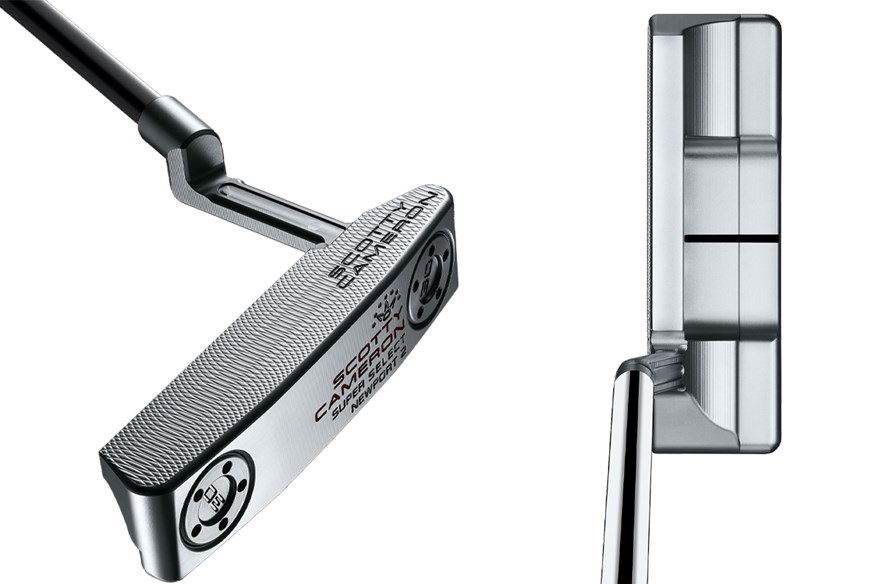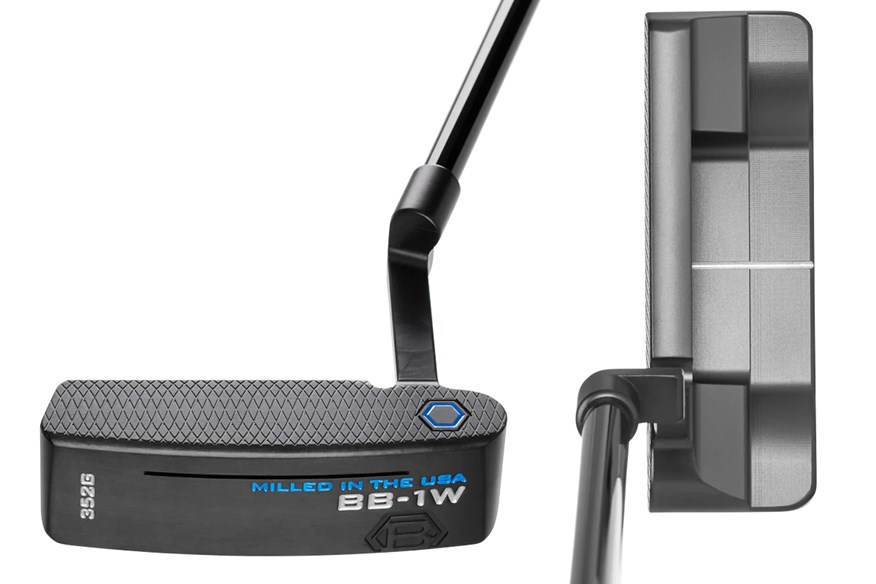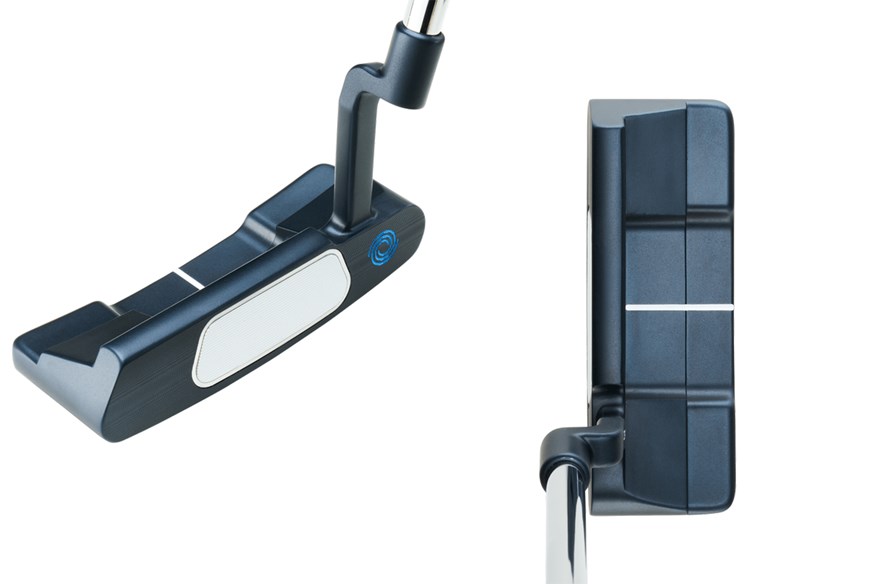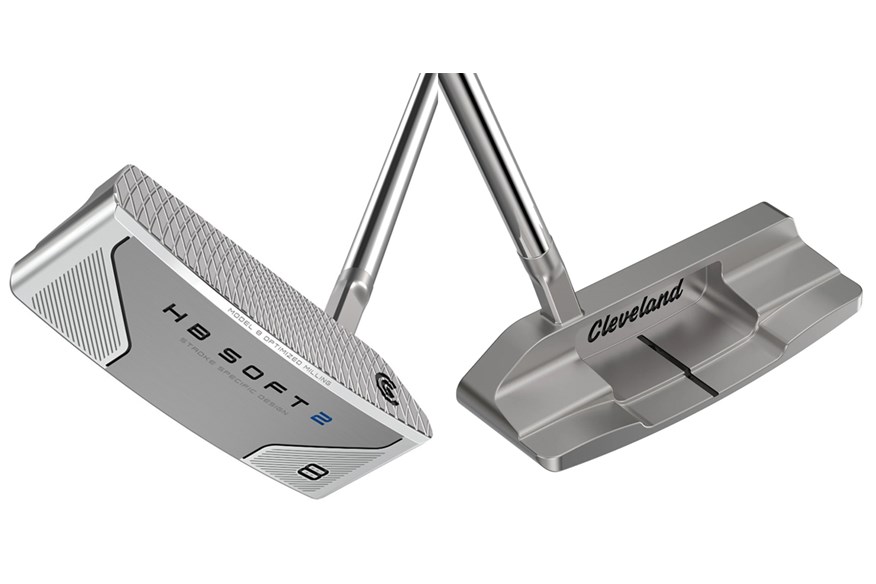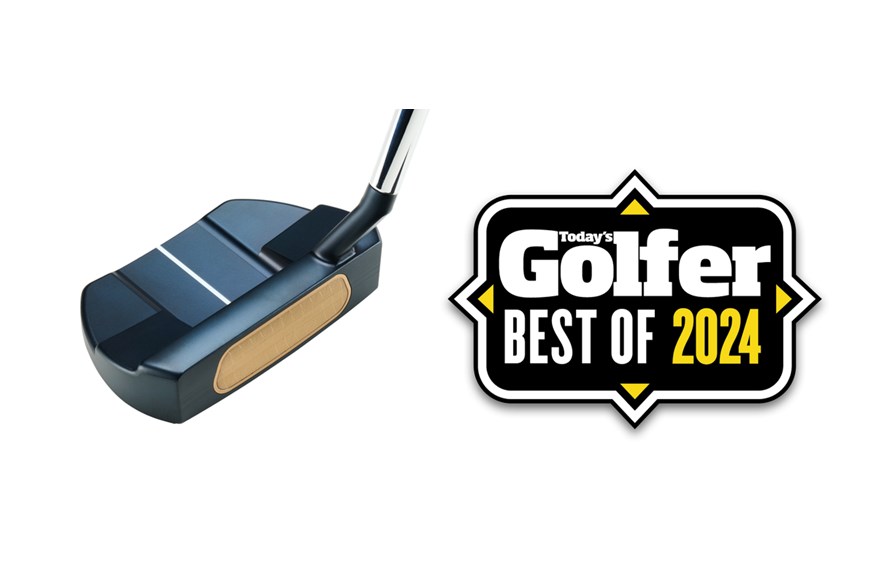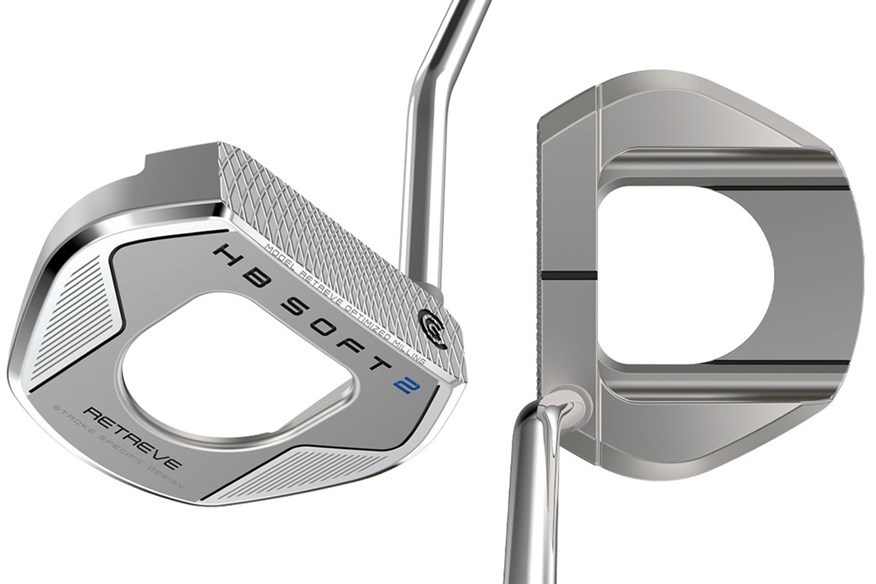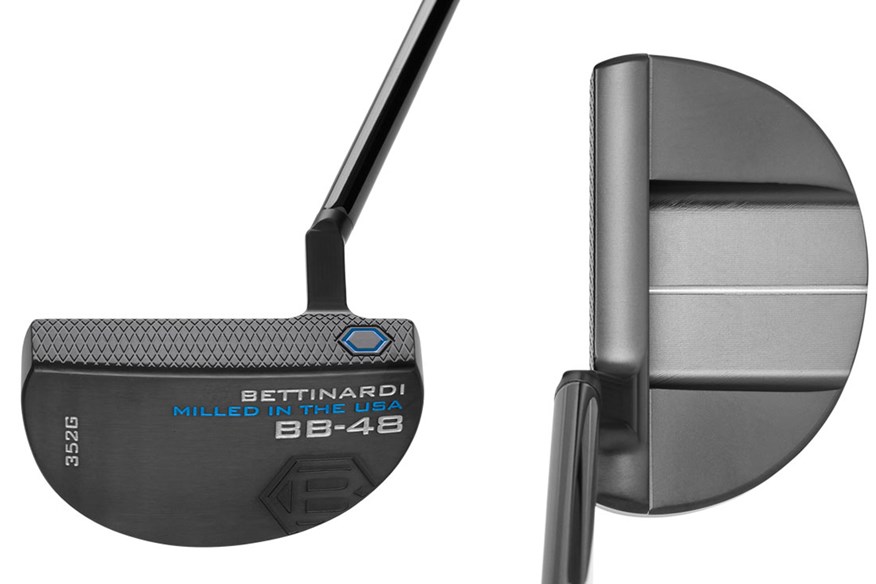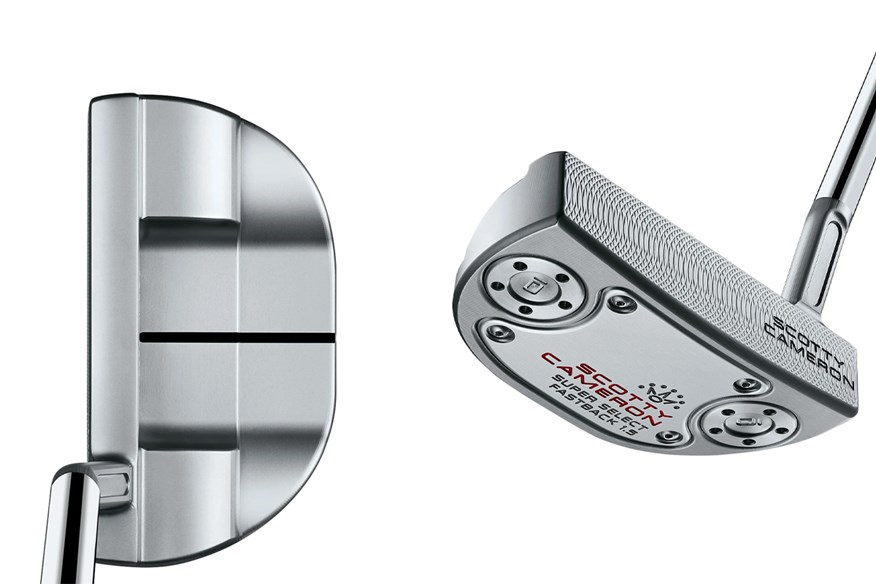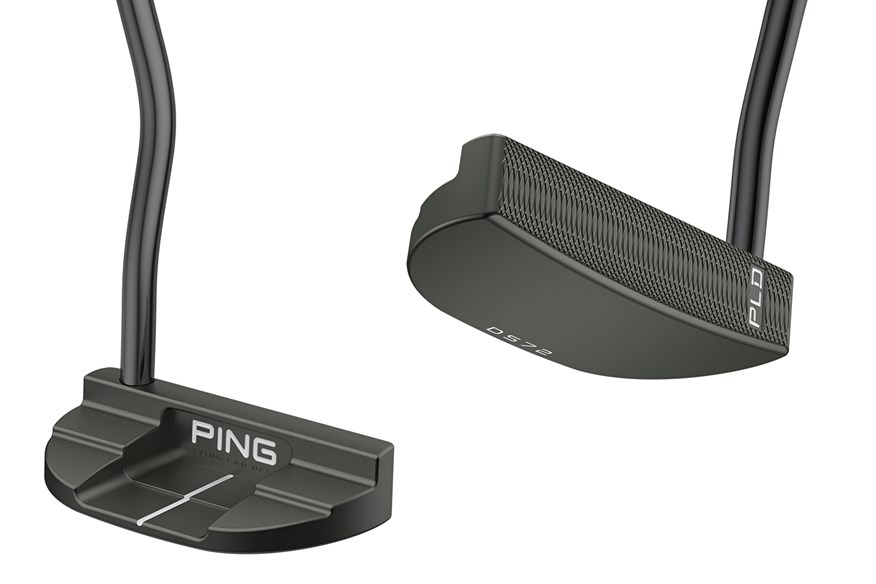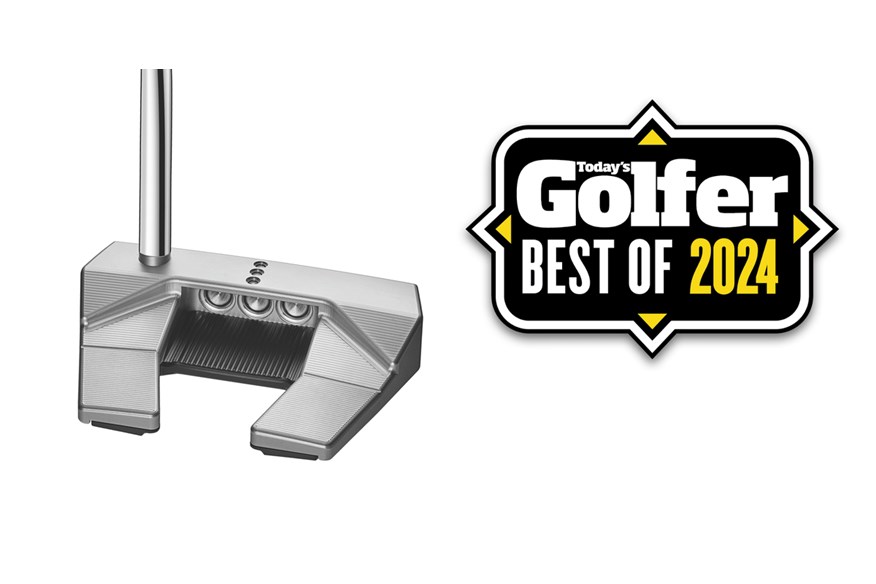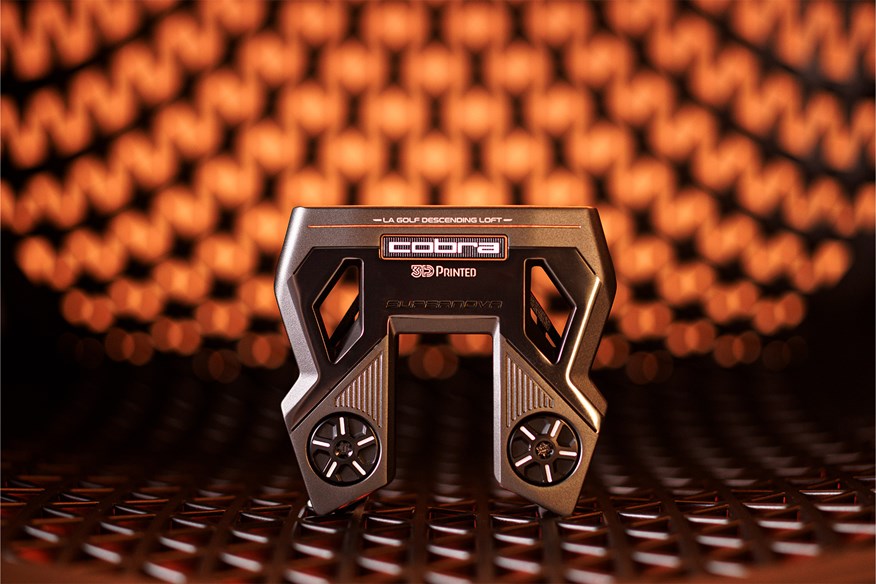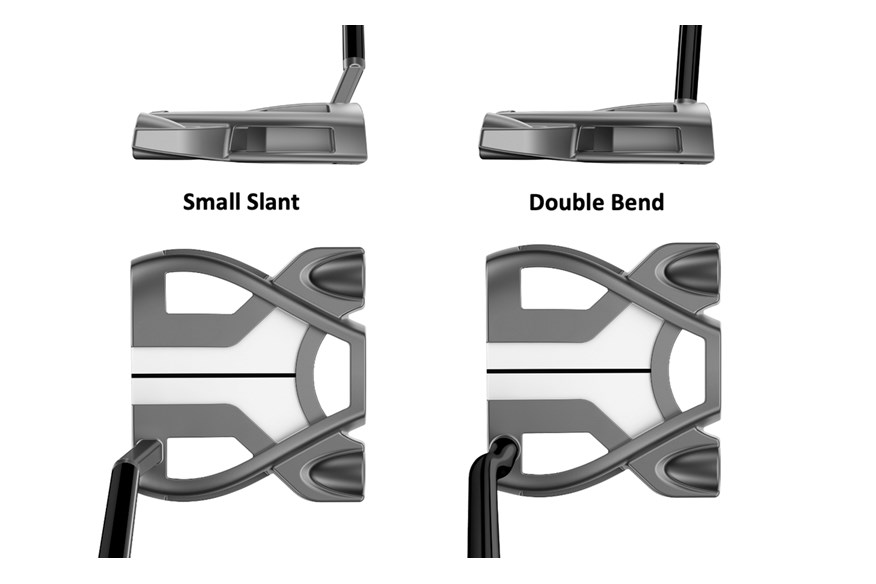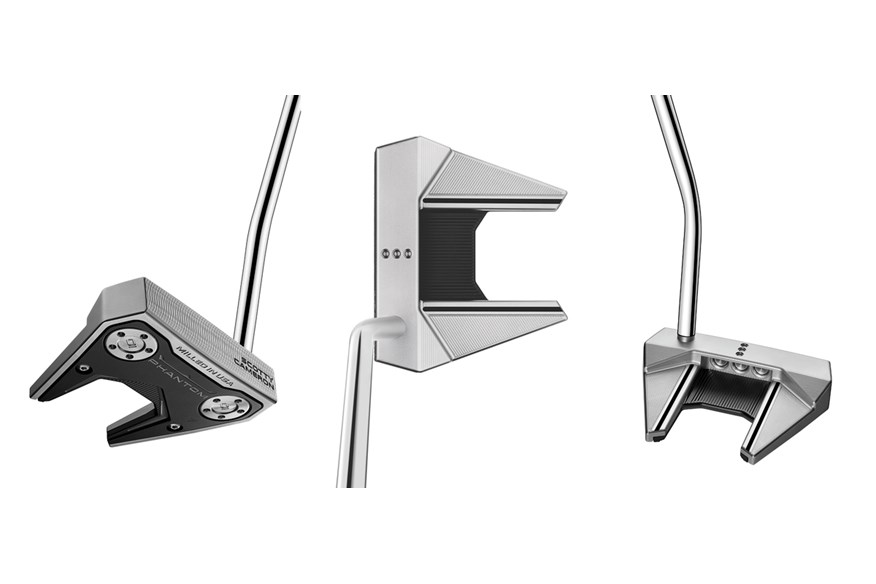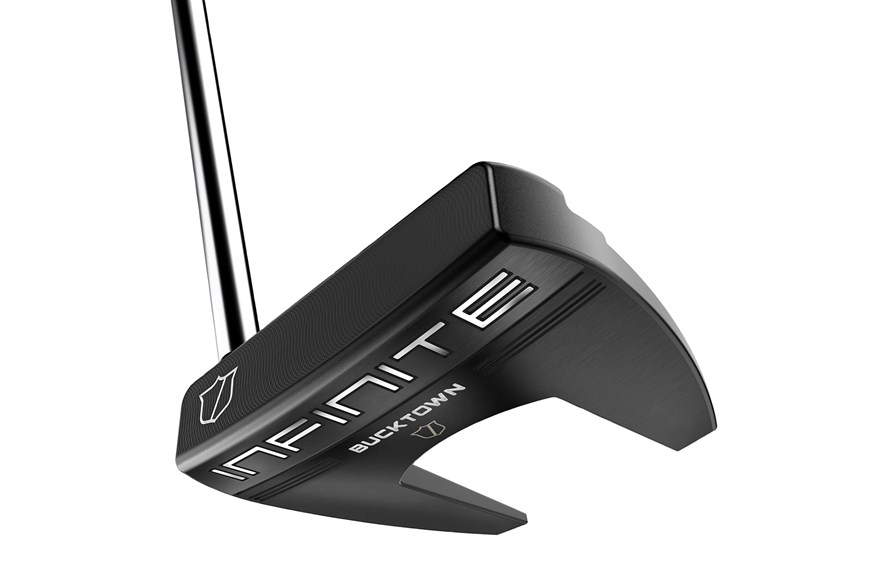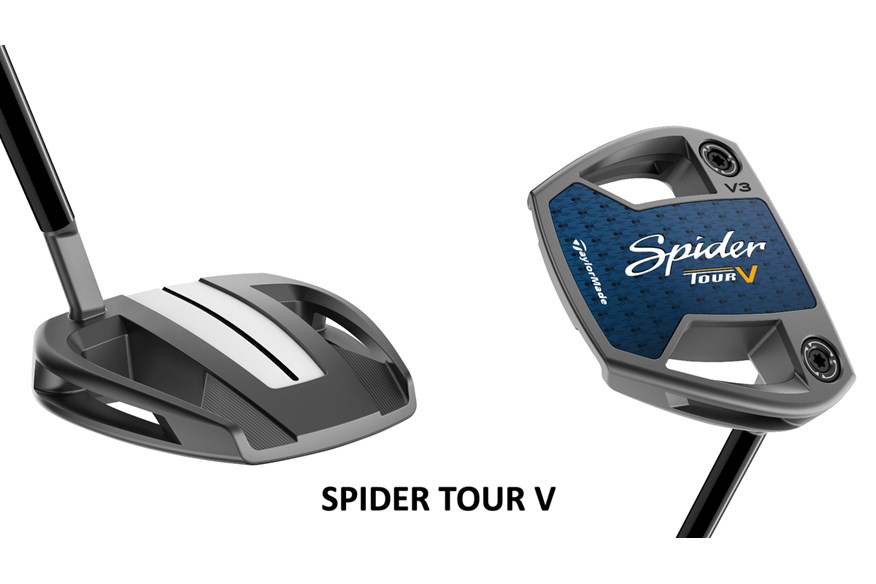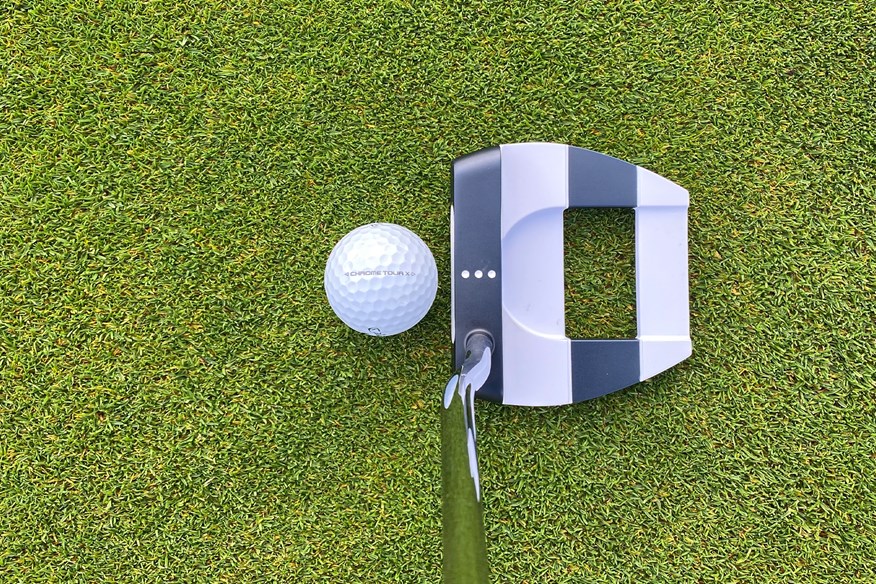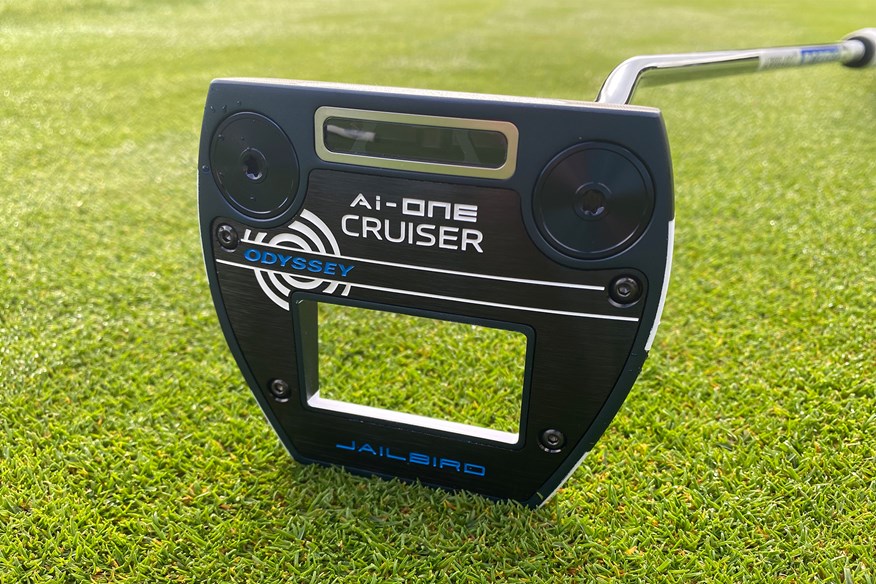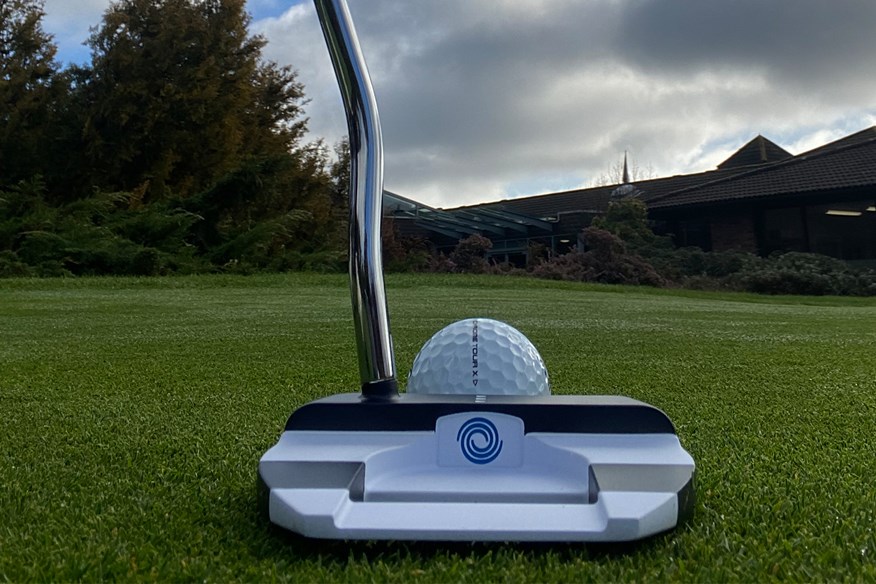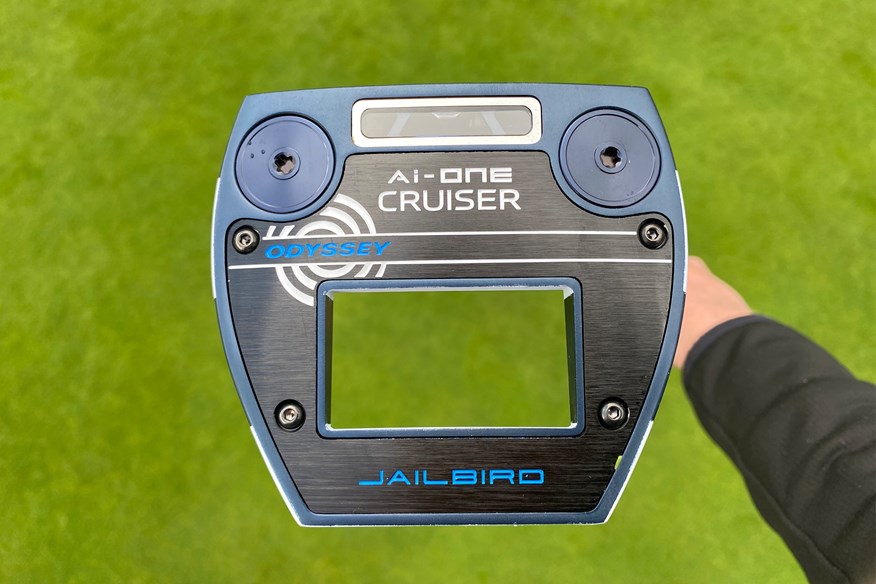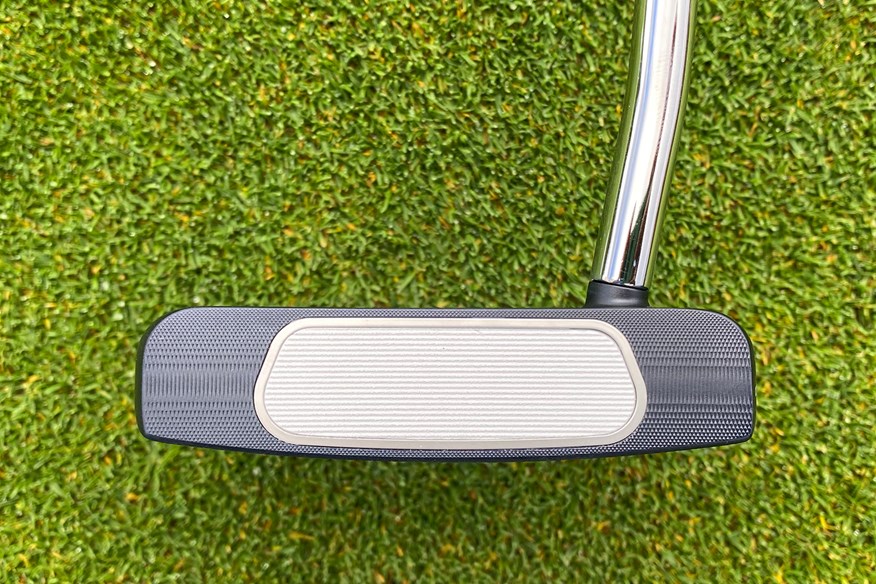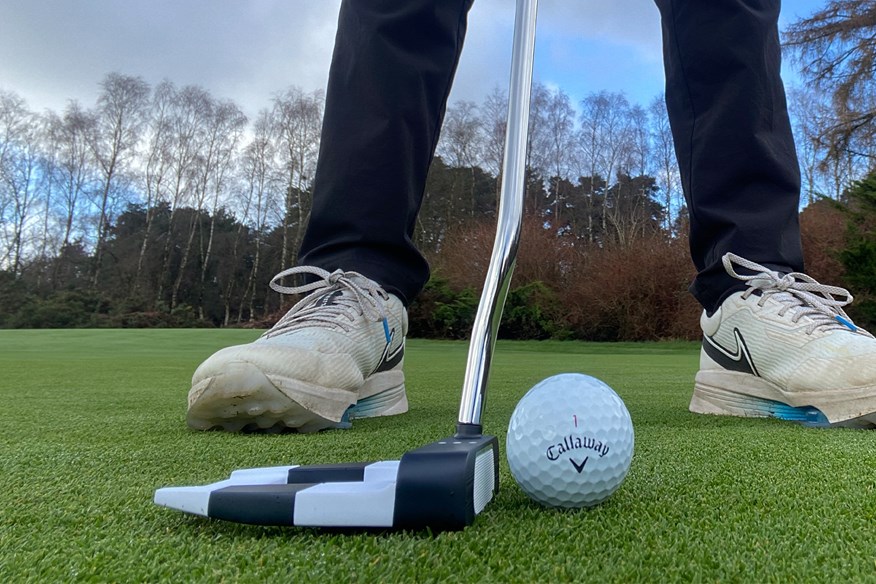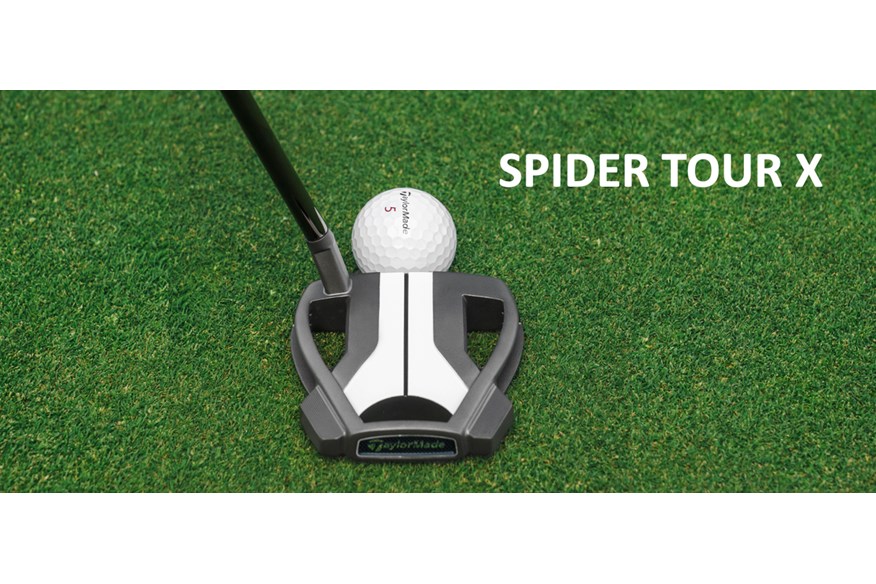Best Putters 2025: 67 models tested by pros and amateurs
Last updated:
It’s the club you use more than any other, so finding the best putter for your game is extremely important.
BEST PUTTERS – JUMP TO:
- How we tested the best putters
- What type of putter do you need?
- Best blade putters
- Best mallet putters
- Best MOI putters
- Buying Guide & FAQs
Finding the best putter for your golf game is hugely important, as it’s the club you use more than any other. There’s nothing more frustrating than hitting a great approach or chip to close range and then missing the putt. Plus, holing a few more putts is a quick way to lower your scores.
Choosing the best putter for your game comes down to many factors, including price, the head shape, what alignment aids suit your eye (if any), whether you have a straight or arced putting stroke, whether you prefer a firmer or softer feel, the length that suits your height and setup, and what type of grip feels best in your hands. We’ve discussed every factor in our guide to choosing the best putter for your game.
How we tested the putters
To help you find the best putter for your game, we’ve tested 67 of the latest models.
TG Equipment Editor Simon Daddow and Test Pro Neil Wain both putted to a hole 15 feet away and hit at least 20 putts with each model tested. We’re listening for sound, looking for how putts roll across the surface of the green, and gauging the feel and feedback of the putter face. We consider the grip size, shape, and texture, whilst also paying attention to the shaft and the stability on off-center hits.
While we normally share all the data from our golf club tests, we don’t do that with putters. Whilst we do use a Foresight GC Quad launch monitor in putting mode to measure and gauge the roll, topspin, and skid of every putt hit, over the years we’ve learned that putting data is more player- and day-dependent than any other club in the bag. So, whilst we use this data for analysis, we don’t base big decisions or recommendations on it, as history shows data is very likely to be different on another day’s testing. Essentially, we’re not comfortable making huge claims that one putter rolls better than another, because we know that on another day’s testing, the rolls could be reversed.
You can read all about how TG tests golf equipment here.
What type of putter do you need?
All of the leading manufacturers – including TaylorMade, Odyssey, and Ping – offer a wide range of putters in different shapes, sizes, styles, and types, so how do you know where to start?
The biggest decision when choosing a new putter is whether you want a blade putter, a mallet putter, or a super-stable high MOI putter.
Blade putters
Blades are the most traditional-looking putters. They are typically quite slim, with a small profile. Blade putters tend to have quite a lot of toe hang, which means they suit golfers with an arced putting stroke, although some face-balanced blade putters are available for those with a straight back-and-through stroke who want a blade style.
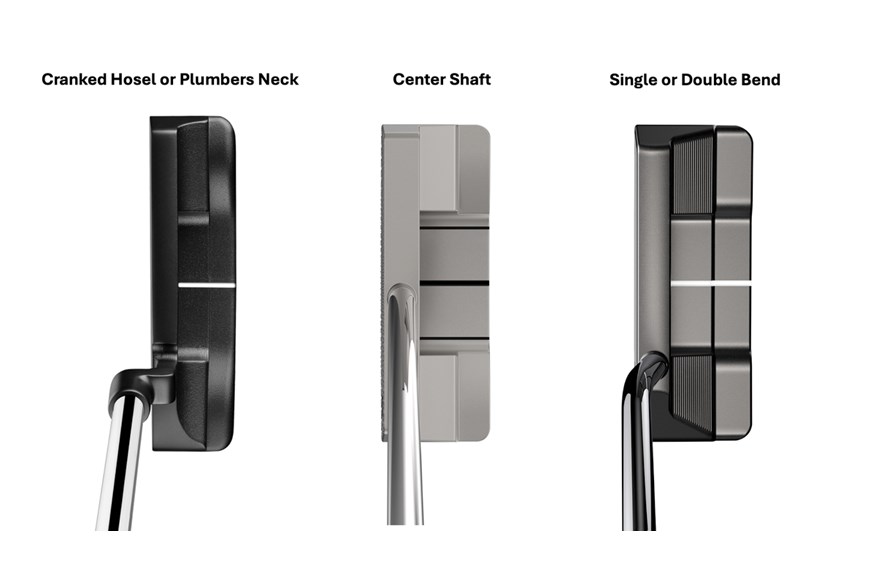
There is a clear trend towards wider-bodied blade putters, which sit between a mallet and a blade and offer a bit more forgiveness and reassurance than a very slim blade.
Mallet putters
Mallet putters tend to have a bigger footprint than blades, although the blade length from heel to toe is often shorter.
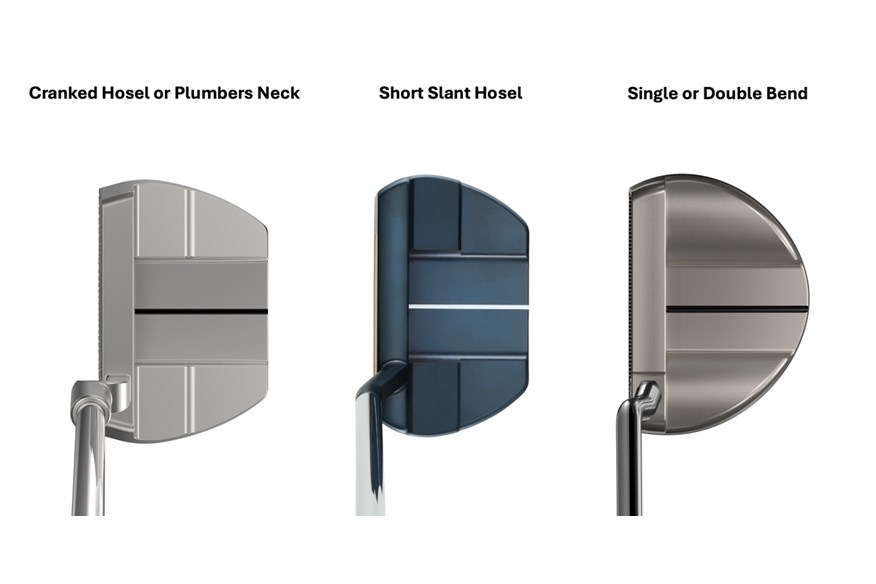
The wider body offers greater distance consistency on off-center strikes than you get with a blade, which can really help as you’ll be surprised how often you miss the middle of the face, particularly on longer putts.
MOI putters
This area of the market has really taken off in the last decade as golfers realize the performance benefits of super-stable putters.
Quite simply, you’re making the game harder by using a narrow blade putter rather than an MOI Putter, especially on longer putts.
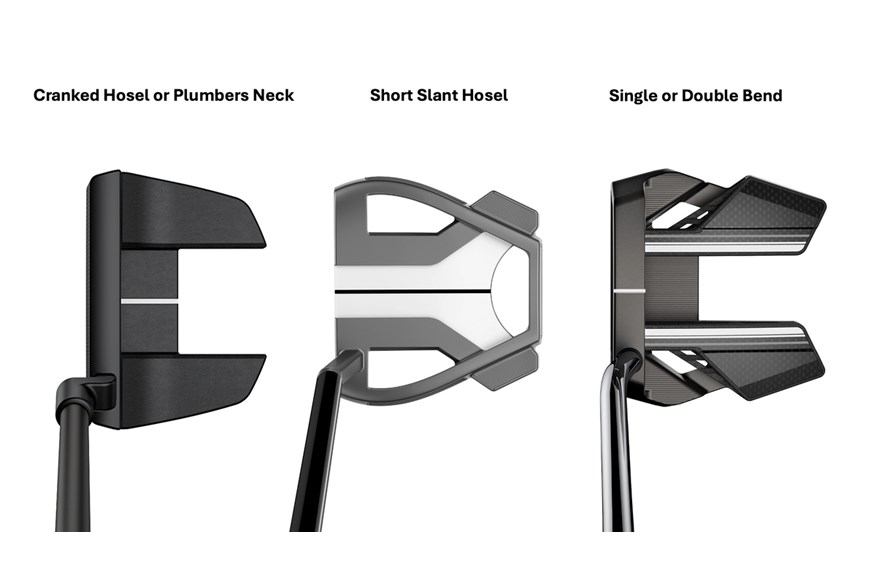
If you can accept the somewhat unconventional looks of an MOI model, you’re giving yourself maximum benefit. It’s important to love the look of your putter, though, as confidence plays such a huge part on the greens.
Best putters: our top picks
Here are the models we highlighted as the best on test:
Most forgiving blade putter: Odyssey Ai-One Double Wide Putter | View Offer
Best budget blade putter: Cleveland HB Soft 2 #8 Putter | View Offer
Best value putter: Cleveland HB Soft 2 Retrieve Putter | View Offer
Best-looking mallet putter: Bettinardi BB48 Putter | View Offer
Most stable MOI putter: PXG Battle Ready II Apache Putter | View Offer
Best budget MOI putter: Wilson Infinite Bucktown Putter | View Offer
Best counter-balanced putter: TaylorMade Spider Tour S Putter | View Offer
Best Putters 2025: Blades
The classic blade and still one of the most desirable putters you can get.
Most desirable blade puttter
If you swear your putting is best suited to a narrow-bodied, traditional blade putter, I don't think there's a better option than the Scotty Cameron Newport 2.
It’s Scotty's flagship putter, and in the last year, this family has been updated with a new face milling pattern, new I-beam neck, and additional MOI performance, all of which have been inspired by the tour pros he works with.
Like loads of golfers globally, I adore the precision of Cameron's 100% CNC-milled putters. My eye is drawn immediately to the sharp crisp edges of the Newport 2, details which just can't be replicated if the putter isn't CNC-milled.
Our test pro loved the firmer no face insert feel and feedback and the roll on putts from multiple distances was true and accurate. I enjoyed the classic shaping of the stock Pistolini Plus grip, it sits beautifully in the hands and gives a lovely soft yet tactile feel. The size and profile is great for aiding golfers who like to 'release' the putter through impact, but if you're transitioning from an oversize (more straight back and through style grip) model you will notice a significant decrease in size.
Interestingly for this family, Cameron has also developed wider ‘Plus’ size Newports for the first time, giving a great indication of where the blade market is headed. If you’re looking at investing £429 in a Scotty blade, I'd seriously recommend checking out those wider models before blindly signing up for this narrow version.
Check out the best blade putters available or read our full review of the Scotty Cameron Super Select Newport 2 putter.
Pros
- Timeless classic design
- Always retain value
- Very popular on tour
Cons
- Less modern tech than many new models
High-quality design and construction with clever tech to aid forgiveness.
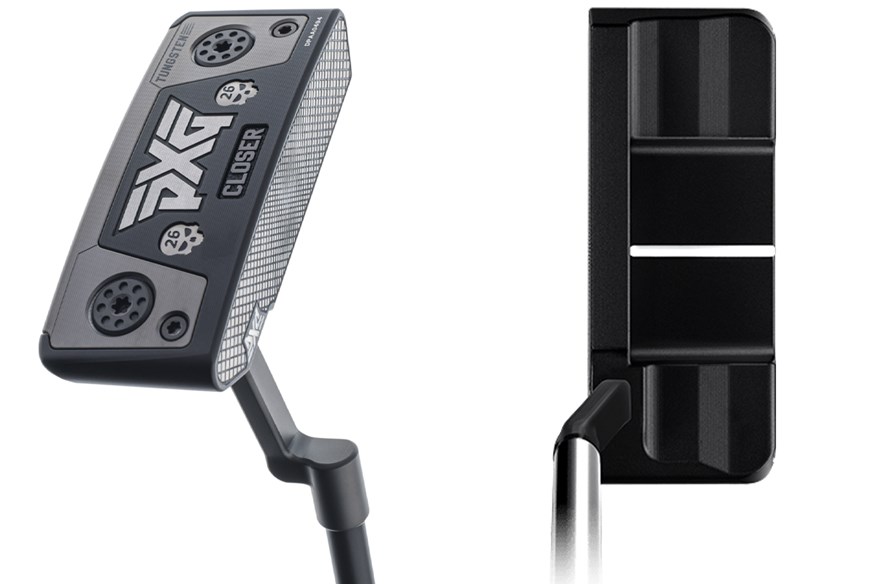

PXG have made performance-enhancing hollow body irons for a decade they've now brought the concept into their putters.
The company say hollow body tech increases MOI forgiveness by 10-20% across the entire Battle Ready 2 family, and as the Closer has been a TG award-winner before, it’s not overly surprising that this new, even more forgiving model gets the nod.
During our test sessions, our test pro had no idea the body was hollow until I told him, which says feel, feedback and sound are all completely unaffected by having a lightweight polymer freeing up inefficient mass inside.
Within the blade putter category I love the Closer’s modern wide-body shaping, and how PXG insists on 100% CNC milling the head, the idea keeps a very close eye on tolerances. Compared to the original Battle Ready putter family I'm a huge fan of the sleek new platinum PVD finish, it elevates the family over the previous matt black and looks great sat behind the ball at address.
During our test sessions and subsequently out on the golf course I've become a big fan of the Closer's long, single sightline it's simple and effective at highlighting where the putter blade is pointing and I realy like how it's so unashamedly bold. There really is no reason why you shouldn't be hittng the center of the bat with this model.
As with previous Battle Ready models, almost every head comes with four hosel options, which allows you to get just the right amount of toe hang for your stroke. You can also alter weight, add a stability shaft, and change grips.
With some 100% CNC Milled putters currently running to £450+, the Closer is a lot of putter for £349.00.
Check out the best blade putters available or read our full review of the PXG Battle Ready Closer Putter.
Pros
- Sleek looks
- Premium construction process
- Changeable sole weights
Cons
- Hollow body putters are a bit of an unknown
A beautiful blade putter with lots of options to suit different strokes.
If it’s a narrow blade you’re after, Bettinardi have lots of beauties to choose from, but the slightly shorter and stubbier head of the BB1 really caught my attention this year. Our test pro loved how the model sat so incredibly naturally behind the ball, a setup we both found to breed confidence standing over short and mid-length putts.
In my eyes Bettinardi blade putters aren't bettered by anyone, I love the attention to tiny details like the Sound Slot cut through the BB1-W sole behind the face. During testing, I believe this simple but effective tech created a slightly higher-pitched impact sound that fans of the original Ping Anser will absolutely adore. The sound difference is definitely more amplified and noticeable on super smooth quick greens, so make sure you try the model and like it before blindly diving in online.
I completely appreciate expensive CNC milled putters are not for everyone, but for those who are intent on using a beautiful, premium, milled blade in 2025, the BB-1 is a timeless classic that will deserve to be treasured for years to come.
Check out the best blade putters available.
Pros
- Classic, beautiful looks
- Very soft feel
- Lots of hosel and toe hang options
Cons
- Less forgiving than some
This might be the most forgiving blade putter ever made.
Most forgiving blade putter
Last year, Odyssey’s Tri-Hot 5K Triple Wide featured among our award-winning blade putters, and this year, thanks to the AI-developed insert helping ensure on- and off-center putts travel the same distance, the AI-One Double Wide takes up the baton.
I've used this putter since attending the Odyssey AI putter launch at PGA Frisco in Texas, USA. I love this head shape with a face-balanced double bend shaft (it's also available with a Cranked Hosel and 37° of toe hang) as I've always liked the look of blade putters but find they're prone to fighting my straight-down-the-line stroke.
I’d love to say Odyssey’s AI family has the capacity to ensure you never three-putt again, but obviously, that’s not true.
That said, Odyssey says their insert will, on average, hit off-center impacts 21% closer to the hole, and when I’ve used the Double Wide I've been really impressed with my distance control. I’ve also holed several pressure putts which might ordinarily have got away. To me, the feel off the face is slightly, firmer and crisper than the brand's iconic White Hot, which is a really good thing if you intend playing year round golf, especially in the UK.
While I can’t specifically put any improvement down to the AI tech the Double Wide head and AI face insert have given me bundles of confidence, which isn’t always the case on the greens.
I’ve seen enough from the AI-One family during our 2024 test pro sessions to say if you’re looking at premium new putters in 2025 – irrespective of whether they’re blade, mallet, or MOI models – and you don’t at least trial an Odyssey AI model, then you’re not doing your game justice.
Check out the best blade putters available or read our full review of the Odyssey Ai One Double Wide Putter.
Pros
- AI-designed face inserts are cutting-edge technology in the putter market.
- Feel and feedback from the aluminum and urethane White Hot insert is a little more lively than the brand's White Hot OG family.
- Very competitively priced.
Cons
- Some golfers will see the lack of a multi-material Stroke Lab as a cost-cutting exercise.
A fantastic budget blade putter.
Best budget blade putter
Budget blade putters used to be common five years ago but now there’s a real lack of good, inexpensive options out there.
Some will dismiss the Cleveland HB Soft 2 #8 (which comes with either a center shaft or slant neck option) as just another toe and heel-weighted blade that they’ve seen a million and one times before. But in the current market, this putter comes in at £119 which is seriously good value as it is beautifully made.
Having worked in club design, I can appreciate a lot of thought and effort has gone into making this whole family (there are nine different models in total) really attractive, functional, and great feeling, which I believe Cleveland deserves serious applause for.
I like the way that Cleveland have spent money where it can make a difference on this putter, so the face is CNC-milled to ensure precision and consistency. Thanks to the milling pattern off-center hits impact more face than groove so will travel nigh on as far as on-center hits. While it's a difficult idea to prove during testing I have little doubt over the course of a season the tech will help shave a few unwanted putts from most golfer's games.
Our HB Soft 2 samples came with the stock Pistol grip, I like the size, shape, and flat front design of this model, the texture is also soft and smooth and transmits a lovely solid feel. Cleveland have thought about everything with this family which means you also get the choice of a standard-sized Pistol grip which is good for slight arc players or an Oversize Pistol that's better for those with strighter putting strokes.
If you’re looking for a decent quality putter that will stand the test of time - on a budget in 2025 - you simply have to check out the Cleveland HB Soft 2. They look great, and I swear in a blind test many club golfers will struggle to feel a difference between the HB Soft and lots of models that cost three or four times as much.
Check out the best blade putters available.
Pros
- Much cheaper than most of the best blade putters
- Looks fantastic
- Feels about as good as any blade putter
Cons
- Quite a wide grip for a blade putter
Best Putters 2025: Mallets
Mallet putters don't get much better than this.
Best mallet putter
Odyssey are brilliant at sticking with tour- and consumer-proven putter head shapes and building in whatever new tech they come up with. The Three T shape has been an award winner here at TG before and I still love the idea of the flat/square back running parallel to the face which makes this model super attractive within the mallet category. Where mallet putters have traditionally had more flowing and rounded head shapes, especially to the rear, the Three T is blunt and straight, which I find really helps highlight where the face is pointing.
You will need to love and appreciate the beauty of CNC Milled putters to buy into the Three T as they really don’t come cheap. But having been to the global launch of the whole AI family at PGA Frisco in Texas, I can confidently say putter designs don’t come any more complex. The work and effort Odyssey have put into developing their AI face story is second to none and while lots of clubs golfers will likely struggle to ever know if the face tech helps putts finish 21% closer to the hole as the brand claims, over the course of a season I’d happily wager a month's mortgage payment that most golfers will see an improvement in their 3-putt percentage using the tech.
With significant amounts of toe hang, the Three T isn’t a model for all strokes, but throughout our test sessions we've really enjoyed how this head shape performs. You will need a decent amount of arc, rotation, or like feeling the putter release through impact to deploy this model at maximum efficiency.
I really like the slightly firmer feel and faster ball speed off the titanium insert of the AI-One Milled series as I use a softer, lower-compression golf ball. To me, the feel and roll are better for all year-round performance in the UK but I completely appreciate golfers who play on seriously quick greens might like teaming the softer White Hot insert of the standard (non-CNC Milled) AI One putter family with a firmer compression golf ball.
If beautifully made mallet putters are on your shopping list in 2025, I’d seriously recommend having the Three T right near the top of the models you want to try.
Check out the best mallet putters available or read our full review of the Odyssey Ai-One Milled Three T Putter.
Pros
- Beautiful to look at
- Packed with technology
- Offers great distance control
Cons
- One of the most expensive putters out there
Simply unbeatable at this price point.
Best value for money
Cleveland can’t claim the Retreve's ball scoop design as their own, as Ping have used something similar on their Tyne G and Fetch over the years. But those cost double the price as the Cleveland comes in for just £119, which is serious value in anyone’s book.
Value-for-money putters have become harder and harder to find, especially so if you don’t want to dumb down on components or go for cheaper painted finishes that overtime will chip and come off. The Cleveland HB Soft 2 family is bucking that trend.
I love how the Retrieve has a CNC Milled face that’s optimized to speed up off-center hits, so they travel the same distance as middled impacts, it's just the sort of tech you get on much more expensive models.
The Retreve's real strength though lies in this cute little mallets super strong alignment credentials. Standing over putts the tramline back shape frames the ball beautifully while a small top edge sightline draws focus onto the exact position you want to impact putts.
Personally, I love this cute little mallet head putter, the golf ball-sized hole in the back simplifies alignment once a ball is addressed, so I reckon the Retrieve can just about claim the title of best value putter in 2025.
Expect a choice of a pistol or oversized grip, and a really crisp classy satin and polished unpainted finish comes as standard.
If you don't like this head shape there's a further eight models in the HB Soft 2 family from blades to MOI styles, if you’re shopping on a putter budget in 2025 this is your place to start.
Check out the best mallet putters available.
Pros
- Great price point
- Premium looks
- Options to suit all stroke types
Cons
- Not the softest feel
Maybe the best-looking mallet putter on the market.
Best-looking mallet putter
Our test pro and I have had a long love affair with Bettinardi mallets as they’re just so damn desirable. After eight years of struggling to move on from the Bettinardi Queen B #11, this year the new BB48 has just about toppled its sibling in our eyes.
I love the BB48 not just for its lovely smooth and responsive feel but also because of its super simplicity at address.
With a golf ball width Black Pearl PVD-colored cavity back contrasting with your white ball of choice, the BB48 has to have the classiest alignment aid in the industry. The setup frames the ball very subtly at address which is incredibly clever within this tiny little mallet-shaped head. The single sightline also looks great behind an unmarked or alignment-striped golf ball at address.
The Perpetual Fly milling pattern on the face isn't Bettinardi's softest but our test pro loved the feedback, believing this cute little mallet gave him the impact 'pop' needed to make a really smooth confident stroke, especially on shorter, high pressure must makes.
Buying into Bettinardi is all about investing in feel and craftsmanship and a product that is always made in the USA, which means the brand's designs never come cheap. There are tons of mallet putters out there in the market place but very few are produced to such high standards in America by a true flat stick legend. If you’re in the market for a premium CNC Milled mallet that oozes feel and class in 2025, Bettinardi are worthy of your full attention.
Check out the best mallet putters available.
Pros
- Frames the ball nicely at address
- Beautifully made
- Fantastic feel
Cons
- Among the most expensive putters out there
You can't go wrong with a Scotty.
Scotty Cameron's Select putter family is delicious – you could easily include every single model in any list of the best putters of the year.
But the Fastback 1.5 stands out to us as it’s the mallet that also best combines the elegance and simplicity wrapped up in Cameron’s iconic blades.
I say that as the putter supremo feels the need to add additional visual curved cues around the cavity back of the other two GOLO mallets in this family, where the Fastback finish remains utterly seamless.
Don’t choose this model just because of my thinking though; the 1.5 does have some toe hang so it would better suit players who don’t try to swing the putter in straight lines.
The GOLO 6 mallet is much closer to being face-balanced and therefore a better option for straighter stroke players.
If you’re buying a Cameron putter anytime soon, make sure you see the different heads side by side. I’d challenge anyone’s eye not to be drawn to the crescent-shaped design around the cavity back of the GOLO models, which I find really distracting.
If you see what I see you’ll start wondering why the curved line is there and ultimately find it a little annoying. The super simple Fastback 1.5, on the other hand, is utterly clean and unfussy, hence why it features among my five top mallet putters of 2025.
Before buying into any Cameron putter always make sure you like the weight as personally, I find they have a tendency to be a little head light, which isn't ideal particularly if your stroke isn't that solid.
Check out the best mallet putters available or read our full review of the Scotty Cameron Super Select Fastback 1.5 Putter.
Pros
- Super stylish
- Great for players with some arc in their stroke
Cons
- Not good for those with a straight putting stroke
We can see why Viktor Hovland loves this putter.
Ping have just launched five new fully CNC Milled PLD models for 2024 and during testing I was very much drawn to the super simple DS72 mallet. It’s the model favored by Norwegian Viktor Hovland and we can see why he feels this model is the perfect fit for his game.
I love the blunt head shape, so the back of the head is parallel to the face which is perfect if your eyes struggle to deal with a full-on curved back mallet shape. I also love the DS72’s muted sound and firm no-insert feel.
Throughout our test sessions, putts came off the face with very little skid or bounce and what felt like lots of forward roll momentum, so this is a model our test pro and I would happily have in our own bags.
However, £400+ is a lot cash for a putter that doesn’t appear to be crammed full of tech like a Cobra 3D Printed Supernova or TaylorMade Spider Tour. But you have to appreciate this model takes hours to CNC Mill which costs money and gives a very premium and precise end product.
If you’re happy spending at this level I have to make you aware that Ping have just opened a PLD fitting lab at Loughborough University, where for an additional fee you can get custom fit for and pretty much design your very own PLD model to your exact requirements. That's a level of service rarely available in the UK.
Check out the best mallet putters available or read our full review of the Ping PLD DS72 Putter.
Pros
- Lovely shape
- Good fitting options
- Customizable
Cons
- A lot of money for not lots of tech
Best Putters 2025: MOI Putters
A Scotty Cameron for those who want plenty of stability and forgiveness.
It’s taken Scotty Cameron decades to become a major player in the MOI putter market but 2024 marks his arrival on the scene with a bang. It’s no coincidence the flat stick legend has just recruited Austie Rollinson of Odyssey mallet and alignment aid fame at a time when he’s looking to blow the MOI putter market wide open.
Admittedly the Phantom 5 isn’t massively different in shape and design from the preceding Phantom X 5 but its refined fang-shaped head has been very cleverly designed to throw attention onto the impact position, which to my mind will be a huge hit with CNC Milled MOI putter fans. Where lots of modern fang back putters have slender, thin back shaping, the Phantom 5 is much wider and bolder which gives a brilliant sense of stability and off-center hit forgiveness. For setting up at address I also really like how the face runs parallel to the fang ends at the back of the head, to my mind it's an idea that really heightens the sense of face alignment over more traditional fang-back models.
Our test and I loved the feel, feedback, and roll from the Phantom 5; it’s every bit as good as what I’ve experienced from Scotty Super Select blades, with additional impact stability when putts don’t hit the center of the bat. That of course didn't though mean we holed every putt. During our test sessions, I’ve also been really impressed by the soft smooth texture of the new grip and how its shape fits my hands while transmitting lovely feedback and feel from all ranges.
Scotty Cameron has put a ton of work into getting where he is in the MOI market. Success has not been instant as it was with his beautifully CNC milled toe and heel-weighted blades, but thanks to the 2024 Phantom family I feel the flat stick master is right on the cusp of a wave of owning this market in much the same way he has with CNC Milled blades for decades.
Read our full review of the Scotty Cameron Phantom 5 Putter.
Pros
- Great stability
- Stylish design and finish
- Great feel
Cons
- Scotty purists will want a blade
A clever use of modern technology boosts MOI and forgiveness.
I hear all the time how technology hasn’t really changed in golf for decades as rules limit equipment performance incredibly tightly, but it’s models like the new 3D Printed Supernova that keep challenging this sort of blinkered thinking.
We may be talking tiny amounts of difference but a lightweight 3D-printed polymer lattice inside the Supernova’s head removes inefficient weight so more mass is positioned around the head to increase MOI and forgiveness. And even if that only means you hole a couple more putts per round or reduce your three-putt percentage slightly, the Supernova becomes a very worthwhile investment.
We have history with the Supernova here at TG as the original and its predecessor featured among our top-performing MOI putters for two years in a row.
This time around the head shape has been refined a little and there’s carbon fiber to remove even more weight from high up in the head.
I really like the combination of the sightline on the top rail and the two bold white lines that frame the golf ball's width at address, even though I completely appreciate some golfers will likely find the head's multiple angles and different material finishes slightly distracting.
Cobra make a big deal about using LA Golf’s Descending Loft Technology to get putts rolling quicker and more smoothly, from my experience though I struggled to see a real tangible difference using this model. That doesn’t mean it won’t help in your quest to hole more putts more often, just don’t expect to instantly see a huge difference in the skid and roll performance of putts out on the golf course.
For £299 in the current market, the Supernova is a huge amount of putter for the money, there is serious amounts of work tied up in making this head. I love the feel, feedback, and super stability set-up, hence why the model features among my top-performing MOI putters of 2025.
Read our full review of the Cobra 3D Printed Supernova Putter.
Pros
- Cutting edge technology
- Very stable
- Great forgiveness on off-center strikes
Cons
- Busy head may be distracting
A super stable putter tour pros love.
No flat stick has done more to build the MOI putter market on tour and at retail over the last decade than the TaylorMade Spider. Rory, DJ, Jon Rahm, and Jason Day have all won big with the Spider in recent times.
Brian Harman also hit the jackpot with the franchise at the 2023 Open Championship. The American's win was significant though as the putter he used was not only an oversized Spider model but also a counter-balanced one. With mass positioned above the hands inside the putter shaft, which increases stability, Harman putted the lights out in Hoylake. As did Wyndham Clark at the 2023 US Open (with an Odyssey Versa Jailbird), and Rickie Fowler, who regained his mojo – all three players used counter-balanced putters.
Needless to say, counter-balanced putters are hot real estate right now. Putter brands have fallen over themselves over the last six months to get new models to market quickly, as golfers have literally been screaming out to try counter-balanced models all over again.
The Spider S is TaylorMade’s counter-balanced offering for 2025 and I absolutely adore it. The iconic head shape is perfect as the foundation of a counter-balanced putter model. The head is renowned for being incredibly stable as mass is freed up from the center and relocated to the perimeter. And this is a seriously well-respected shape and tour-validated model.
To nudge up MOI and forgiveness even further I love that TaylorMade have stretched the footprint by 3mm from toe to heel and added an additional 8mm from face to back, which to my eye really boosts confidence standing over knee-knocking putts. The size difference is really noticeable at address and as you swing the putter as the overall feeling is one of incredible stability, a trait that lots of golfers could benefit from in their putting stroke.
The real win for me though with the Spider Tour S is how the model is available at both 35” and 38” lengths, whereas the major competition from the Odyssey Ai One Cruiser family comes in one length only (38”).
I’ve tried over-length counter-balanced putters before at 38” lengths and found they have a tendency to feel really unwieldy and get caught up in clothing as being under six foot tall they were never really designed for me. Whereas at 35”, an inch longer than my typical putter, I get all the benefits of additional overall stability, along with an MOI head shape that is second to none, a set-up which makes the Spider S an absolute winner in the MOI category this year.
Throw into the mix a lovely long alignment line that looks great sat behind a golf ball with an alignment stripe, a responsive face insert that grabs and grips putts into a lovely smooth roll across the surface of the green, and a completely non-offensive but more durable gunmetal PVD finish, and you have the best MOI counter-balanced putter of 2025. If a more stable putter is on your agenda in 2025, do yourself a favor and start here. I promise you won’t be disappointed as Counter-Balanced putters are much easier to transition into over the best armlock models.
Read our full review of the TaylorMade Spider Tour S Putter.
Pros
- Very stable
- Extremely forgiving
- Great for alignment
Cons
- Quite busy to look down on
A super stable putter for those who need as much help as they can get.
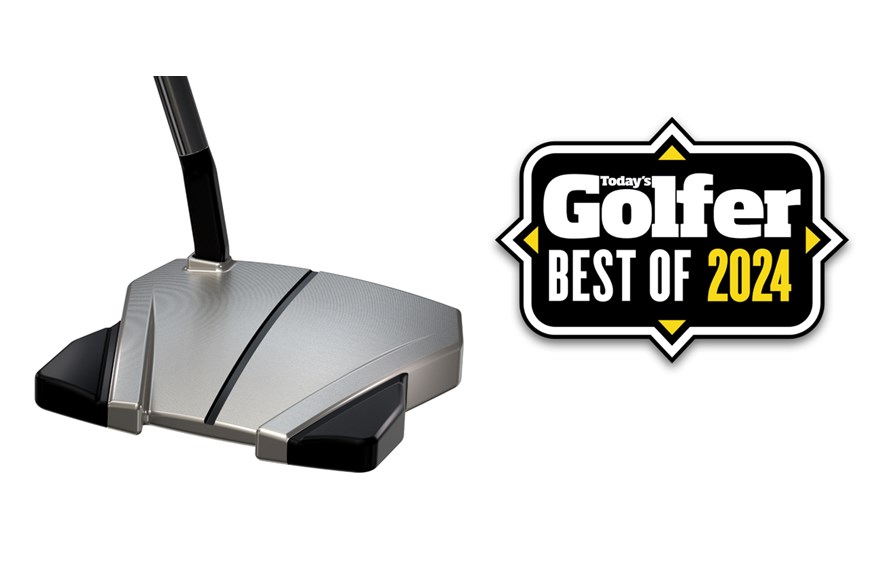

It makes perfect sense after seeing such success with hollow-body iron tech, which allows engineers to create a blade-type look with the playability of a cavity back, the same idea be transferred over to making forgiving hollow-body putters. If stability and forgiveness are your aim in 2025 you simply have to check out PXG’s Battle Ready 2 Apache, it's a beast.
Yes, the model has a really big head size which you will notice at address, but it’s also a very sleek shape, without too many angles to confuse the eye. I also love how like most PXG putters it’s also available in four different hosel options, which allows all of us to choose how much toe hang our putter has, which simply isn’t an option from most mainstream putter makers.
I love the Apache's bold single sightline, it’s the height of simplicity, I also really like how the black back wings are cleverly disguised to hide their size and shape. This is a very cleverly designed putter that looks great in the play position, thanks to the hollow body and internal polymer it doesn't sound and feel half bad either.
The cherry on top though has to be the Apache’s massive MOI. While many putter makers don’t like publishing MOI data for their flat sticks, the Apache comes in at 7717g cm2. That’s 35.4% higher than TaylorMade’s legendary Spider Tour and 27.5% higher than the same brand's bigger footprint counter-balanced Spider S. All of which will be music to the ears of golfers who want a super stable putter.
Read our full PXG Battle Ready II Apache Putter review.
Pros
- Incredibly stable
- Lots of hosel options to get toe hang to suit your stroke
- Clean and simple design
Cons
- Large head size won't suit everyone's eye
A gorgeous wingback that will never go out of fashion.
Scotty Cameron didn’t invent the modern fang putter as we know it today, but I have to take my hat off to the guy as once again he’s figured out a way to make a widely available head shape infinitely more attractive with this 100% CNC-milled model.
Angular wingback putters like the Phantom 7 are available all over nowadays but Cameron’s offering stands out as it’s beautifully proportioned and finished. I’m drawn to the model as the long alignment lines that frame the ball at address also highlight the straighter path I like to swing the putter along. For me, they also channel focus onto the area you're trying to impact putts, which is really comforting. For straighter stroke players this model is an absolute dream. If your stroke has more arc the Phantom 5 will be a better fit with its extra toe hang.
To use this model successfully you will need to accept the multitude of different lines and angles, the head is filled with them, but they’re no different to what you’ll find on other fang style putters. From my experience the feel, sound, and impact feedback are outstanding from this beautifully engineered model. If you’re looking for a premium stability MOI putter in 2025, the Phantom 7 is a brilliant choice that will hold its value.
If I were spending my own money I’d be weighing the Phantom family up against the TaylorMade Spider putters, as a $100 price difference (thanks to the Spider being cast, where the Phantom is CNC Milled) is a lot to stomach in anybody’s book.
Read our full Scotty Cameron Phantom 7 Putter review.
Pros
- Lovely sound and feel
- Great stability
- Scotty Camerons hold their value
Cons
- More expensive than the TaylorMade Spider for similar performance
A great value-for-money MOI option.
Best budget MOI putter
Good value-for-money putters are getting harder to find in the modern world. I always like to highlight at least one such buy in each category, as we know not everyone wants to blow hundreds on a new putter.
Wilson’s Infinite family has stood out for a few years now in the budget field, and the whole range has been relaunched for 2024.
You don’t get hosel choices or changeable weight set-ups, nor a milled head or soft face insert, but the Bucktown is still a strong modern fang/MOI putter for reasonable money. Expect a slightly firmer feel off the putter face, as there's no soft urethane face insert, but from my test sessions I believe the responsiveness and how putts launch is perfect for most of the golf season in the UK, where greens are typically a fraction slower.
Putter grips are really personal pieces of equipment. Neil our test pro and I both liked the midsized stock model on the Bucktown as the V-shaped back sits comfortably in the creases of the fingers, giving an excellent gauge of where the putter face is pointing directly to your palms.
If you’re drawn to the Bucktown, make sure the face-balanced set-up suits you: it typically works best for straighter strokes.
The Infinite family runs to multiple models, so should you find yourself wanting a more traditionally shaped blade or mallet, Wilson have other decent options, too.
Pros
- Fantastic value for money
- Great for straight putting strokes
- Multiple models to choose from
Cons
- Less premium build
A great MOI model for those who don't want a chunky putter head.
We’ve gone all out on the TaylorMade Spider franchise being a huge hit in 2024, and it was our test pro who insisted this new Tour V deserved to feature among our favorite putters this year. His thinking boiled down to the Tour V being a very streamlined and pared-back MOI model, as many competitors create bigger shapes, which can be much more difficult to stomach. If you’ve been put off the MOI category for this reason before, this is definitely a model to search out and try.
Where the Spider Tour’s siblings all have protruding weights around the back perimeter, this model is super clean and easy to look at when standing over putts. There are no angles or additional shapes to draw or distract the eye to the back of the putter head at address, which also means a slightly lower MOI. Remember though cosmetics play an important role in deciding whether many decent golfers will put a new putter in play or not.
With a center of gravity location just 27mm from the face (the smallest of the Spider Tour family), expect a substantial 32° toe hang, and a Spider putter that feels and behaves like a blade (the reason why lots of tour pros switch to Spider models). That should definitely be a consideration if you’re transitioning into MOI putters from a blade, as this setup will be more similar to what you're used to.
If you’re really sensitive to the feel of putters, I believe the Spider's surlyn and aluminum combo works great with different golf ball compressions and cover materials, as some insert putters can feel spongy if you play very soft golf balls. With a Spider model to cover all wants and desires in the MOI market in 2025, the franchise is very difficult to overlook this year.
Check out the best TaylorMade putters or read our full TaylorMade Spider Tour V Putter review.
Pros
- Sleek package
- Feels almost like a blade
- Great for those with an arced stroke
Cons
- Not as stable as some bigger putters
Evnroll's best putter of 2024
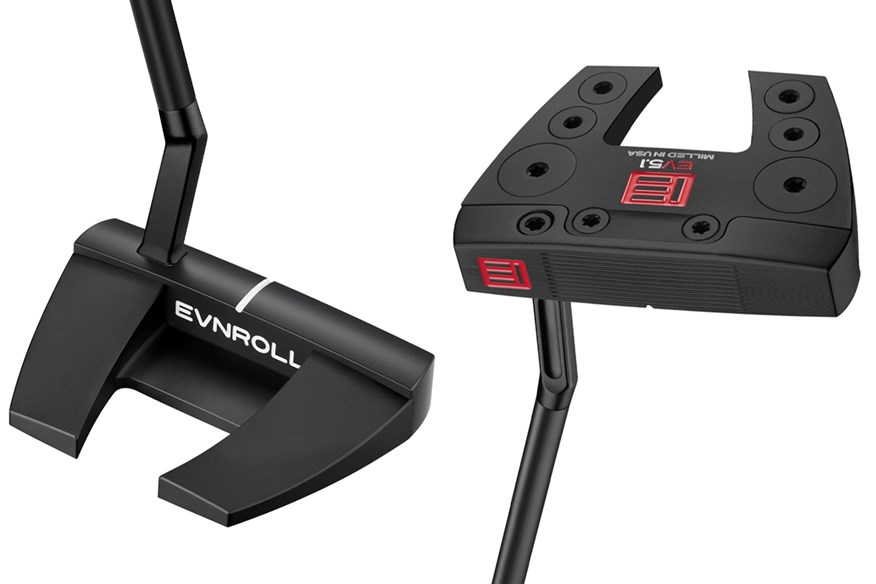

If you’ve felt in the past that MOI putters have had a reputation for being a bit cumbersome, distracting, or just not being all that appealing, the EV 5.1 is the model that will change your mind. Our test sample came with a full blacked-out finish, which gave this modern wing-back head a super simple unfussy look at address and a smaller overall appearance.
If you use an alignment stripe on your golf ball, the EVs single sightline looks great sat behind it, and thanks to the contrast between the black and white finish it’s really good for focusing attention on the impact zone while also highlighting the alignment of the blade.
I loved the feel and roll performance of this model, I felt I could gauge distance control accurately and consistently. I believe the EV 5.1 combines a blade like feel with good roll and stability tech, so this model has the capability to get mishit putts closer to the hole more often.
I'm blown away by six toe hang options and a multitude of sole weights, all of which can be arranged to dial in swing weight and toe flow - that's levels of choice that can barely be matched by any putter manufacturer.
If I were spending my own money I'd opt for the stock Tour Tac grip, it's one of my favorites. Expect a brilliant mid-sized pistol shape, with plenty of soft, tacky traction to boost confidence, even on the slickest of surfaces.
Pros
- Looks clean and simple at address
- Great for alignment
- Huge array of options
Cons
- Firm feel won't suit everyone
Hard to beat for alignment and stability.
Golfers went crazy for the original Jailbird after the 2023 US Open, where Rickie Fowler shot the low opening round and Wyndham Clark went on to win using the same nine-year-old model.
Unsurprisingly, Odyssey have reintroduced it in their new 2024 Ai-One family, a move that should reap massive rewards.
I’d love to say our test pro and I noticed the AI face tech helping off-center putts finish closer to the hole, but that’s incredibly hard to prove.
I'll put my hand up and say despite the ‘21% closer’ claims of the AI face, it didn’t stop me three-putting the first hole I played with my sample. But such a rude start didn’t put me off loving this model.
It’s not rocket science but the black, white, black finish of the Jailbird and having the back edge of the head running parallel to the face, rather than being curved like a mallet, is just like having alignment help on steroids. If you can’t aim this model squarely at your target line, there really isn’t a putter out there that can help.
Admittedly this model is a little smaller than the counter-balanced 38” Jailbird model Rickie Fowler uses, but I believe for many that will be a plus as big MOI heads adorned with this sort of paint job are really in your face.
I love the firm but soft feel of the insert, the roll across the green's surface is superb, and the pistol-shaped grip is a better shape than what the company have made for some time. If it’s alignment and stability help you want in 2025, the Jailbird has all the answers.
Check out the best Odyssey putters or read our full Odyssey Ai-One Jailbird Mini Putter review.
Pros
- Great for alignment
- Really nice pistol grip
- Lovely feel
Cons
- Busy design won't suit everyone
The classic MOI putter that changed the game.
Spider putters have played a huge role in convincing many tour pros to ditch their blade putters for more forgiving MOI and mallet-style models over the last decade. This and the previous X models alone can lay claim to helping Rory McIlroy have his best putting season ever and breaking many a scoring record.
TaylorMade relaunched the Tour X at the back end of 2023, and this beautifully put-together model is an excellent option within the MOI arena. I like that, thanks to not having the deepest center of gravity location (like blade putters) and quite a bit of toe hang, the model is often a really good fit for golfers looking to transition from toe hang blades into more forgiving MOI-style putters.
This head shape is a proven winner, and from my experience while testing it’s a reliable and consistent performer on the dancefloor from distance and close range. I really like the flowing body lines whereas some of the competition adopt much sharper edges and more angular approaches. If there’s such a thing as a classic MOI putter, the Spider Tour X is it.
In previous generations, the X has been an award winner here at TG, and I reckon the new black shaft, refined sound and feel, which is noticeably more muted than the original, and more durable gunmetal PVD finish which won’t chip like previous painted models, elevate the X onto the MOI putter podium once again.
Check out the best TaylorMade putters or read our full TaylorMade Spider Tour X Putter review.
Pros
- Tour-proven over many years
- Pleasing design
- Good forgiveness and stability
Cons
- You can't scoop your ball up with it
How to choose the best putter for you
Budget/price
With many of the best putters retailing for over $400, it’s important to decide how much you’re willing to spend. After all, a higher price doesn’t guarantee you’re going to hole more putts. Typically, the leading manufacturers are at the forefront of R&D and use premium materials, which explains the high price, but there’s nothing to say you can’t find a putter for under $200 that works great for you.
Can alignment aids make a difference?
Putters, particularly mallets and MOI models, come with all sorts of different visual aids to help you align putts and strike the ball in the middle of the face more often. A lot comes down to personal preference, so it’s a good idea to pick up as many putters as you can to see what sort of alignment aids suit your eye. Here’s my guide to finding your perfect alignment aid.
A clean top rail
Golfers who like a clean top rail use the perpendicular line created by the blade sat behind the ball to square up to their target. A lot of putters combine a clean top rail design with other alignment features, but players who like models in this category will often find the extra cosmetic shapes or lines distracting.
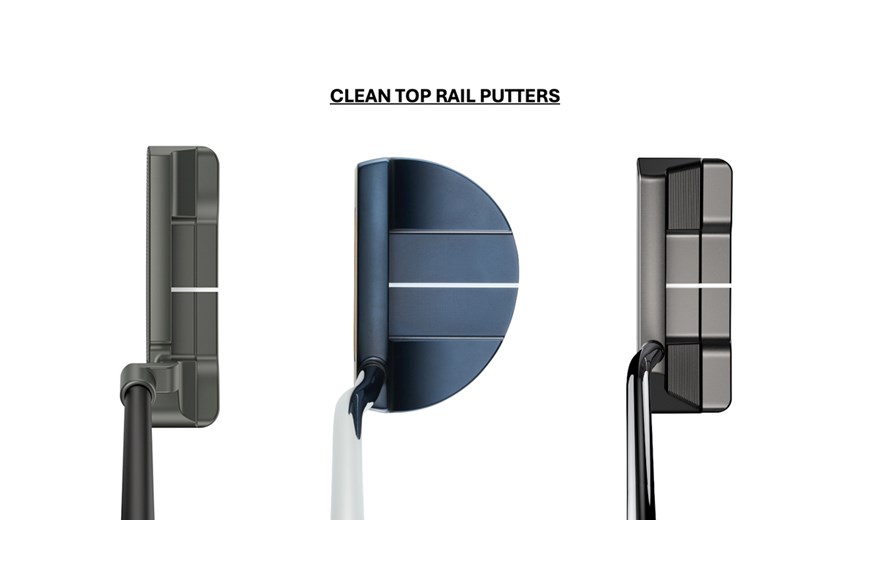
Predominantly, think of the golfers who gravitate to this style of putter as liking simpler, traditional blade designs with less going on cosmetically and you won’t go far wrong.
A golf ball width feature
Golfers who like a golf ball-width feature do so because they like to frame the ball while lining up to putt. There are tons of putters out there that have a feature to frame the ball at address, and while some do it subtly, others are much more explicit.
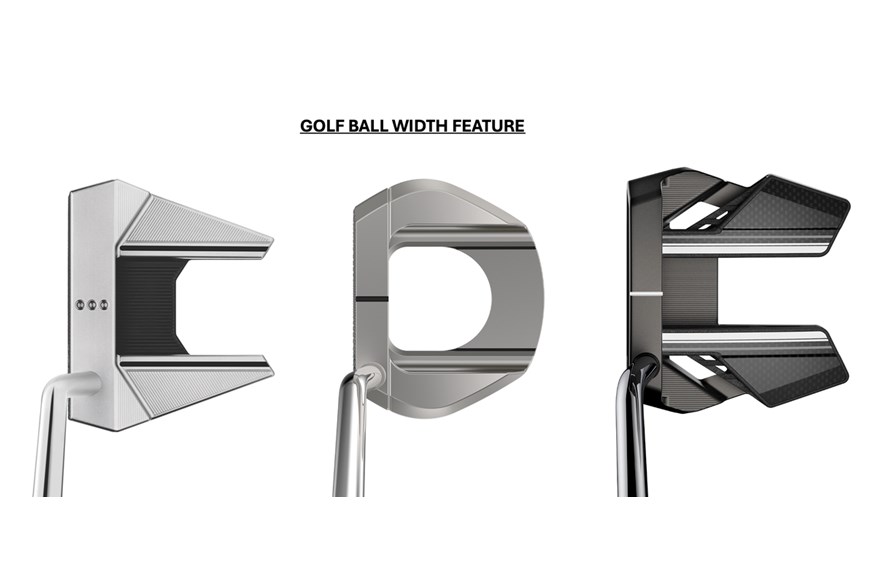
“This kind of player wants lines to indicate where the outer edges of the ball should be in relation to the putter’s body, like tram lines running straight from the putter’s head out to the edges of the golf ball that’s sat in front of it,” Ping’s Dr. Paul Wood told me. The putter may have a clean top rail, but golfers aren’t using it to align.
A sightline that runs to the ball
A sightline like this leads the eye all the way to the back of the ball, and I’ve always felt it gives the impression of hitting a nail in with a hammer when putting. The alignment feature doesn’t have to be a line – it can be another design – but explicitly this style of putter doesn’t have a top rail.
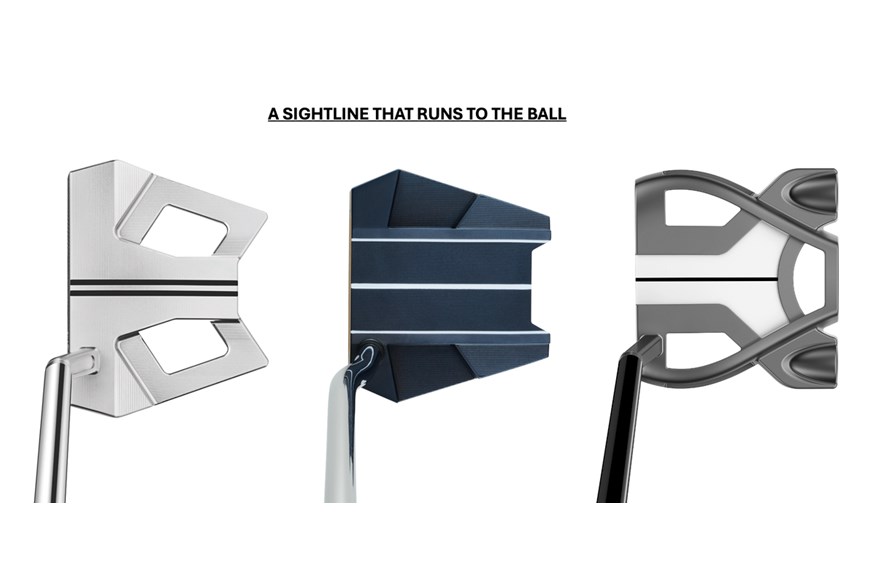
Ping’s Dr. Paul Wood told me “Research shows a really good match between players who describe a putter matching their eye, and aligning consistently correctly with those models.” So there’s a real link between finding a putter that’s easy to align and putting well with it.
A long sightline
Typically, this feature is only really found on mallet-style putters, because blades don’t have the body width to create a long sight line. It’s not a hard and fast rule, but it often tends to be less skilled putters who like this style of alignment aid most.
Ping’s Dr. Paul Wood told me “There’s a real trend of more skilled players wanting fewer alignment features, which sort of makes sense as the better you are at lining up, the less help you need.
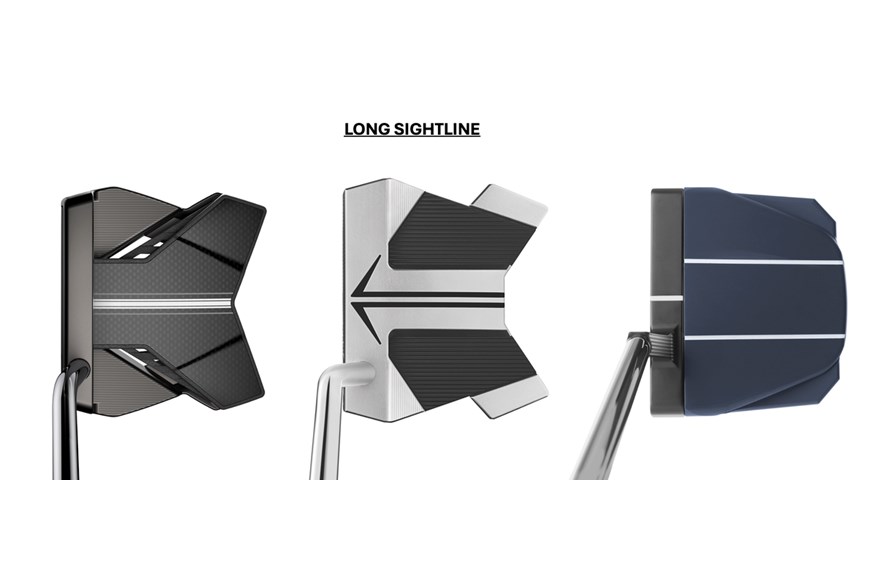
There’s a reason most beginners don’t pick up traditional blades with no sightlines; they’re not so easy to line up. It’s natural, then, for less skilled and less confident golfers to go for wider body, longer sightline models because there’s more insurance. Mallets are more stable and forgiving, but you also get more help lining up, too.
Don’t forget also if you draw a straight line on your ball, a single line on your putter can be a great accompaniment for that. If you use a triple track golf ball, a putter with three lines can work brilliantly too.
Toe hang/stroke type
Most putters come with different hosel options, which not only affect the look but also the amount of ‘toe hang’ the putter has. Toe hang is measured in degrees and basically dictates how much the putter wants to rotate during your stroke. Generally, golfers with more arc in their putting stroke will benefit from more toe hang, while those with a ‘straight back and through’ stroke will want less.
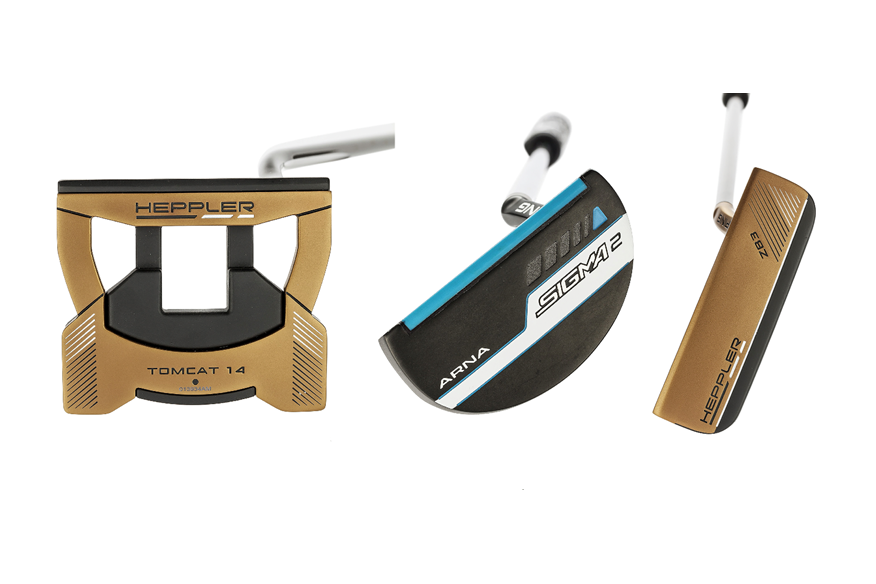
A simple but effective way to see how much toe hang a putter has is to balance the shaft on your finger; the angle at which the head points down towards the ground when hanging freely is the amount of toe hang. A putter with no toe hang is often called “face balanced” and the face will be pointing straight to the sky.
Face type/Insert
Putter faces used to be a simple, flat piece of metal, and although some are still like that, most have an insert or some form of groove pattern designed to help reduce skid and get the ball rolling sooner. Finding the face type or insert that you like the feel of is key to confidence and consistent pace control.
Shaft length
Putters are typically 33″ to 36″ long (discounting arm-lock models, which are longer). The correct length largely depends on your height but also the way you stand when putting; basically, the distance from your wrist to the floor when you address a putt is the length of putter you need.
Give the grip shape and profile your full attention
There’s a mountain of putter grip options to choose from, whether you want to explore the size, shape, profile, or material of your putter grip my best putter grip page will help you decide which best suits you.
There’s a growing consensus of not going too large as you can lose feel and distance control. As a very general rule, oversized grips with flat fronts typically will suit straighter stroke players whereas smaller more pistol-shaped grips can be a better fit for golfers with arc and/or release in their putting stroke.
Should you use a stability putter shaft?
Stability putter shafts have grown hugely in popularity over the last decade, as engineers have realized when premium carbon fiber (like with the graphite KBS GPS) is wrapped correctly in the right areas, graphite shafts can resist twisting better than steel.
Stability putter shafts improve the consistency of off-center hits as the face deflects fractionally less at impact, so the idea has the potential to shave shots from your scorecard and help cut your three-putt percentage.
Out-on-tour stability putter shafts have their place, but they’re certainly not mainstream, so I’d advise not getting too bogged down in deciding whether or not you need one. Other much more important factors need your full attention. If though at any point you want to go full out and create your ultimate flatstick then absolutely a stability putter shaft should be on your radar.
Should I buy a second-hand putter?
Pre-loved putters can be a fantastic option as they offer the opportunity to save considerable amounts of cash buying a model somebody else no longer wants. Make sure you’ve tried and tested the putter you want before buying, it’s much less likely you’ll get fitted to any second-hand model.
Take your time, look at the condition, and get a feeling for how the putter may have been looked after by the previous owner. If the finish is chipped or there are dinks in the top edge it’s highly likely the putter has had a tough life, which could mean it might no longer be at its original spec.
Having the original headcover in good condition is always desirable and a good sign the putter might well have been cherished by its previous owner. I’d always recommend factoring in the cost of a new grip too just so you get the feel and feedback you want. Our selection of the best putter grips can help you decide which will best suit you.
What are Zero Torque putters?
You may have heard about face-balanced, toe-up, and torque-balanced putters before, but L.A.B. Golf’s Zero Torque putters and the new PXG Battle Ready Allan work differently from anything you’ve seen before. The idea came about when Directed Force (the company acquired and relaunched by now L.A.B owner Sam Hahn) built a device called the Revealer, to better understand how putters torque and rotate during the putting stroke. Only by inventing the device, which allows putters to hang freely while being swung, was it possible to spot how putters rotate during the stroke, but also to design a putter that didn’t torque or spin at all.
Other zero torque putters are available (like the Axis 1 used by Justin Rose) but L.A.B. models are different as they’re designed to resist twisting to the path of your stroke, not your target. So, where Ping founder Karsten Solheim invented the perimeter-weighted Anser to twist less on off-center hits, L.A.B. putters are designed to not twist to the path of your backswing and downswing.
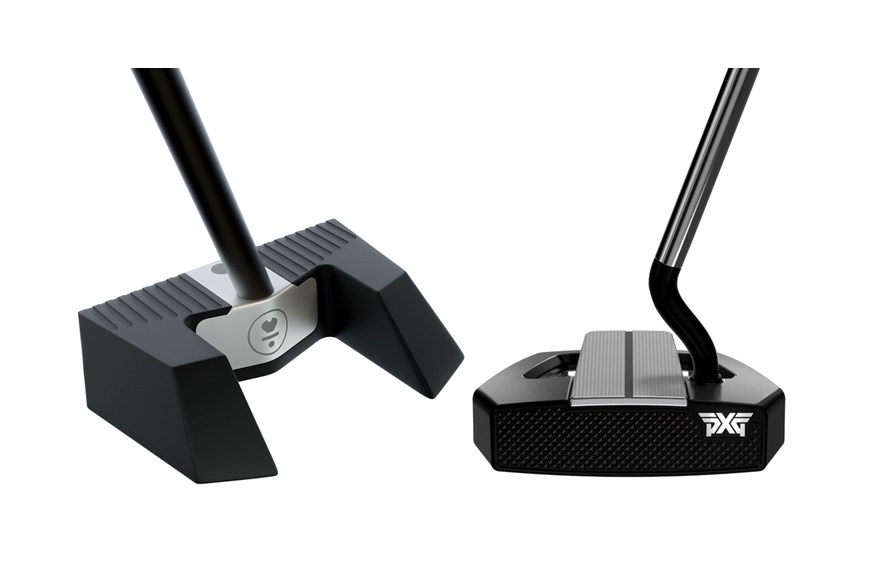
It means the company insists golfers get fit for each model as it’s vitally important to match the lie angle of the putter to how you putt, to ensure maximum effectiveness. The idea also does away with the fitting of putters to stroke type, so don’t expect to hear toe hang mentioned by L.A.B.
Expect a Zero Torque putter to need some bedding in time, they are the hottest trend on tour right now, my best L.A.B. putter page will help you decide if you like the concept and establish which model is for you.
What is the best putter for the average golfer?
It’s a difficult one to answer, as so much of putting comes down to confidence, which makes it important to choose a putter you love the look and feel of. That said, a high-stability MOI putter will offer greater performance benefits than any other type of putter. If you’re struggling with your putting and have only ever used a traditional blade, it’s well worth seeing how much a forgiving MOI putter could help you.
Who makes the best putters?
As you’ll see from our selections above, brands including Scotty Cameron, TaylorMade, Odyssey and Ping make what we feel are the best putters in golf.
What putter does Tiger Woods use?
Tiger Woods uses a Scotty Cameron Newport 2 GSS Prototype putter, which has been in his bag for most of his career. Check out all the clubs and other equipment Tiger Woods uses here.
SUBSCRIBE TO TODAY’S GOLFER: Print and Digital access, discounts and rewards!

Simon Daddow
Today’s Golfer Equipment Editor
Simon Daddow is the Equipment Editor for Today’s Golfer. Having tested and played more than 10,000 clubs in his life, what he doesn’t know about golf clubs isn’t worth knowing.
He’s a specialist in all things metal having spent a large part of his career as a golf club maker and product development manager, and has worked in the golf industry for more than 30 years. Starting out as trainee professional at Downes Crediton GC where he learned the art of golf club making, he went onto work for Clubhaus Plc and Tony Charles Ltd as a golf club maker, and running Product Development at Benross Golf.
Simon also spent time working as a Sales Executive in Harrods’ golf department, even helping supply Sir Nick Faldo with personalized shirts in a last-minute emergency ahead of a flight to a tournament.
He joined EMAP Active (now Bauer Media) as Equipment Editor in 2006 and has worked for both Today’s Golfer and Golf World. Working alongside our test pro Neil Wain, Simon has made todays-golfer.com the most reliable source for golf club testing.
Despite his youthful looks, Simon has played golf for more than 40 years and plays to a handicap of 10. A lack of club speed means he’s short off the tee, but very handy from 125 yards and in.
He enjoys excellent relationships with the biggest names in the golf equipment industry, including PXG boss Bob Parsons and TaylorMade’s Tomo Bystedt and Adrian Rietveld.
Away from the course, Simon is a season-ticket holder at Peterborough United Football Club, attending games with his young son. He’s also a keen cyclist and enjoys working (and relaxing) at his allotment.
His favorite ever piece of golf equipment is the Callaway Warbird fairway wood and he considers the biggest technological advancement in the game to have been titanium driver heads.
Simon’s job means he plays regularly around the world, and rates Kingsbarns as his favorite course. He uses a PXG 0311 GEN6 XF driver, TaylorMade Stealth 2 HL (15º), Ping G400 (20.5º), PXG 0317 X Gen2 hybrid, PXG 0311 GEN6 P irons (6–PW), Cleveland CBX2 wedges (52°, 58°), Ping 21 Fetch putter and a TaylorMade Tour Response golf ball.
You can contact Simon via email and follow him on Twitter for loads more golf equipment insight.

